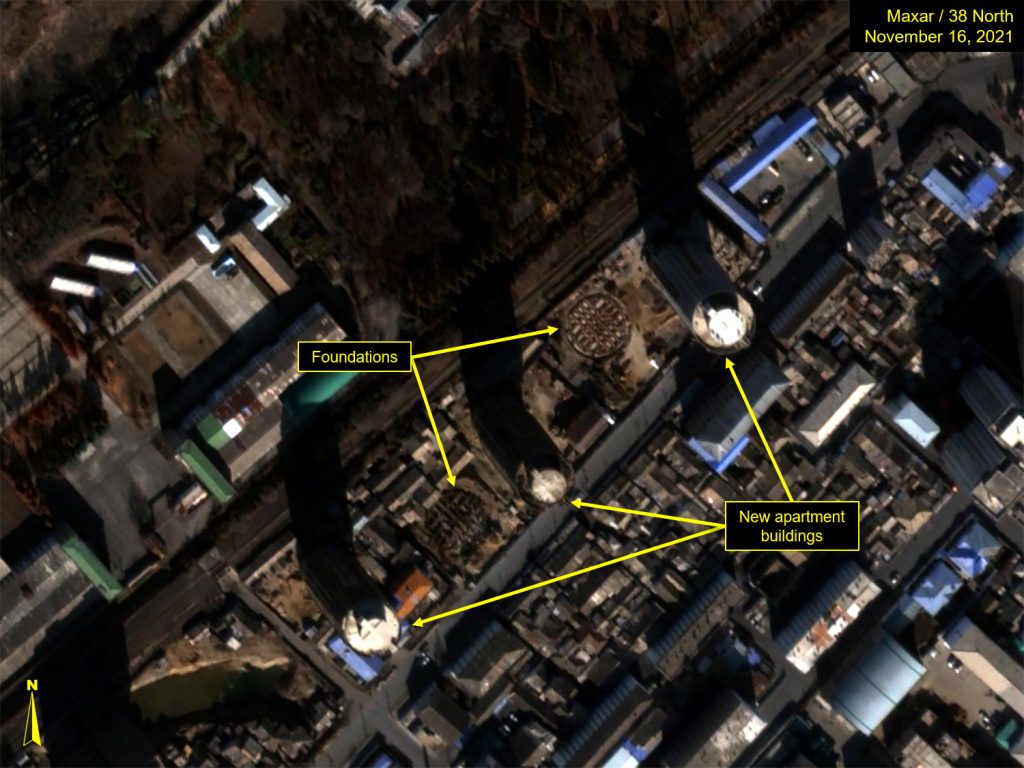Activity at the Uiju Airfield Suggests Further Preparations for Reopening the Border
Recent commercial satellite imagery indicates heightened activity in and around North Korea’s Uiju Airfield, located near the Chinese border, providing support for reports that the country may be planning to resume some level of trade and import in the near future.
Activity continues at the possible disinfection center on the airfield, including the movement of trucks and materials around the warehouses. The airfield also appears to have been partitioned off in recent months, with new fences or bollards, and a new rail spur has been constructed leading to the eastern end of the airfield. Operations at this facility will be vital to the resumption of international imports that would bring in much-needed food, medicine, and other materials for the first time in more than a year.
Despite these activities, the Chinese and North Korean customs yards in Sinuiju that handle truck crossings remain quiet, as they have been throughout 2021. This raises questions of whether trade and imports may be limited to just railways, if and when they resume.
Possible Disinfection Facility
At the possible disinfection center, activity was low over the summer but has increased in recent months. In the imagery from November 16, trucks can be seen on the site, and materials are placed alongside the runway and near the presumed exit of two of the warehouses. The amount and arrangement of these materials have changed in recent weeks.
The identity of the materials alongside the warehouses and runway is unclear. One report identified them as construction materials, but they also bear a resemblance to objects seen stored in the open air at Nampho container port earlier this year.
It is possible that the materials are the first pieces of cargo to come through the facility and that the facility has already started limited operations; however, it is impossible to conclude the facility is operating based on the limited number of images available.
Figure 1. Unidentified goods or materials near rail platform at Uiju Airfield.
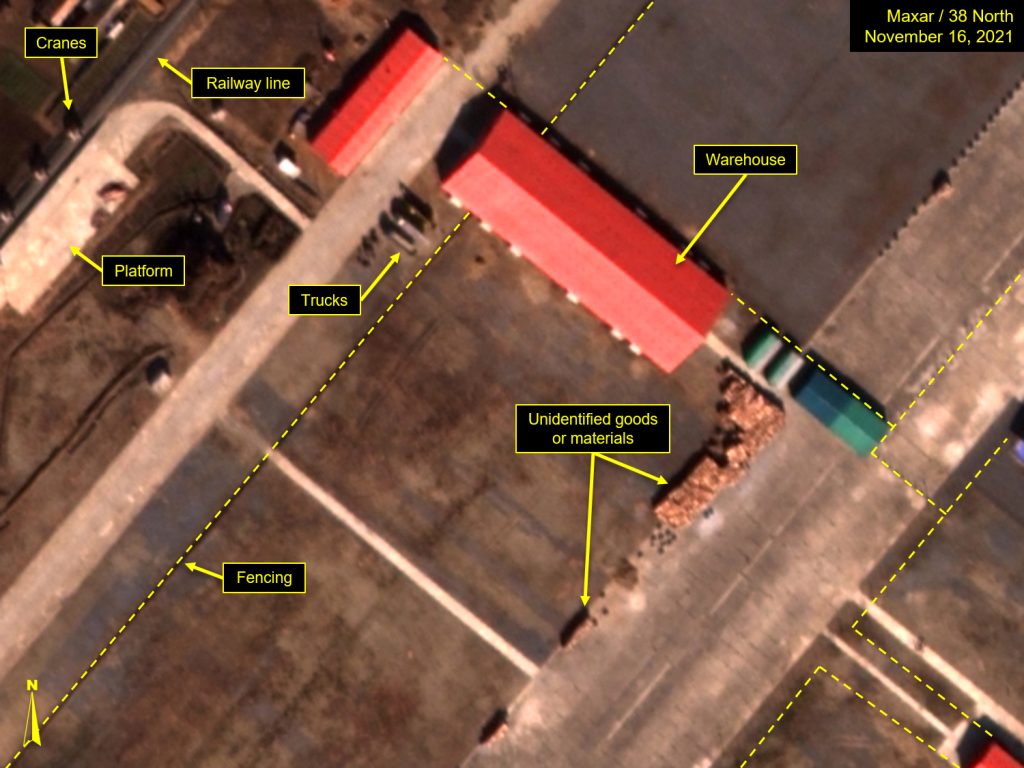
Figure 2. Close up of additional unidentified goods or materials at Uiju Airfield.
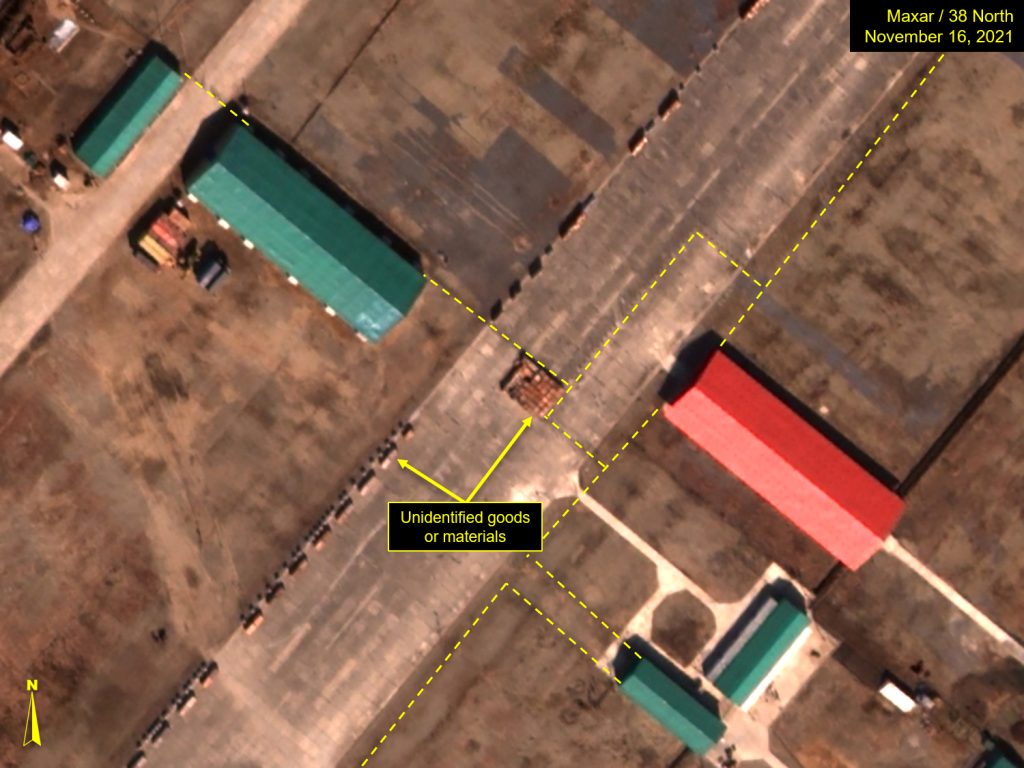
Construction of the facility at Uiju Airfield began in March 2021 and included 10 large warehouses, support buildings and five railway platforms along a new spur that links the facility to the Chinese railway network via Sinuiju Station.
Airfield Internal Divisions
A detailed examination of images from August 16 through November 16 reveals a series of fences or bollards that divide the airfield into different zones and separate the warehouses from one another.
Figure 3. Overview of fencing at Uiju Airfield.
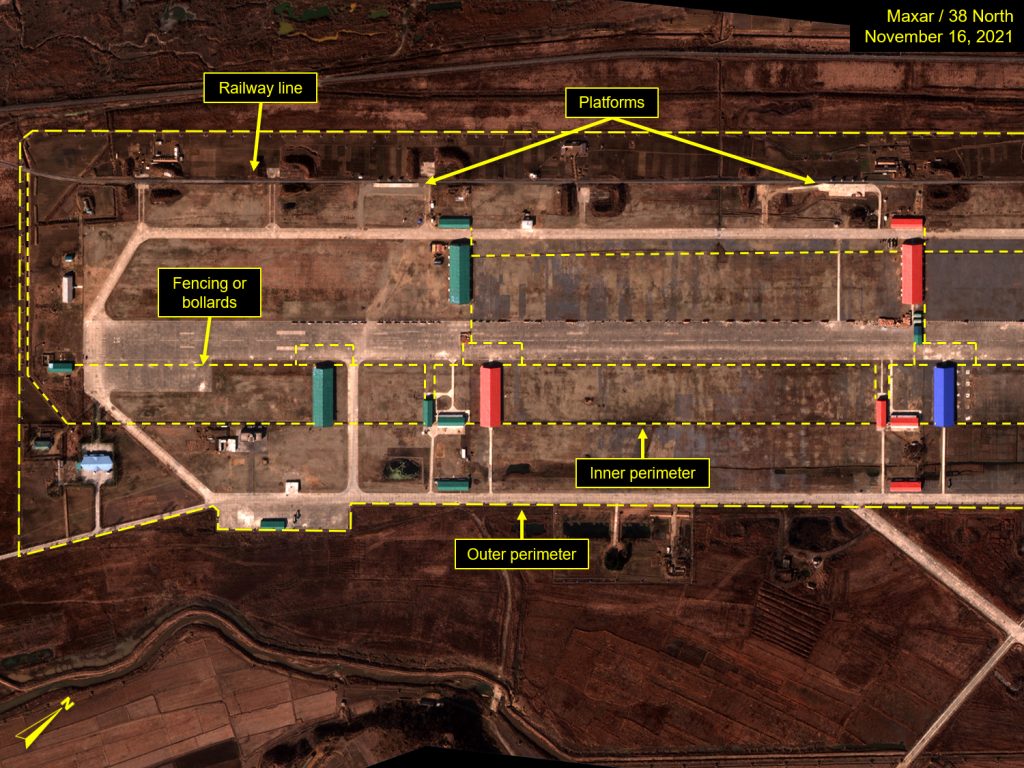
To the north of the runway, each warehouse is paired with a companion railway platform that features cranes for loading or unloading of freight. The warehouses on the southern side are separated by the fencing, which seems to indicate that cargo coming into the country will be carefully controlled and subdivided as it goes through the quarantine process.
The precise nature of the arrangement is unclear and will probably not become so until large-scale operations begin.
The warehouses may contain decontamination equipment. Freight could be transported directly from the railway platform for disinfection. After that, it could be taken out of the warehouse through the opposite door for outdoor storage for a number of days.
Elsewhere at Uiju Airfield: Second Rail Spur
While prior analysis of Uiju has focused on the area around the runway, the airfield extends 2.6 kilometers (km) to the east to an aircraft maintenance area, a central east-west stem road along which are seven large aircraft revetments nested into a wooded hillside, and north to an east-west taxiway previously terminating at a distant aircraft alert apron and two aircraft storage areas.
Most of the aircraft were cleared from this area around the time construction began on the airfield, although some remained through at least June 21, when over a dozen MiG-21s were seen parked.
In July, construction began on a rail spur leading to this eastern area of the airfield. Approximately 12 small and medium buildings, four large storage areas, and a platform at the terminus of the rail spur were also constructed in this area.
Figure 4. Overview of second rail spur near Uiju Airfield.
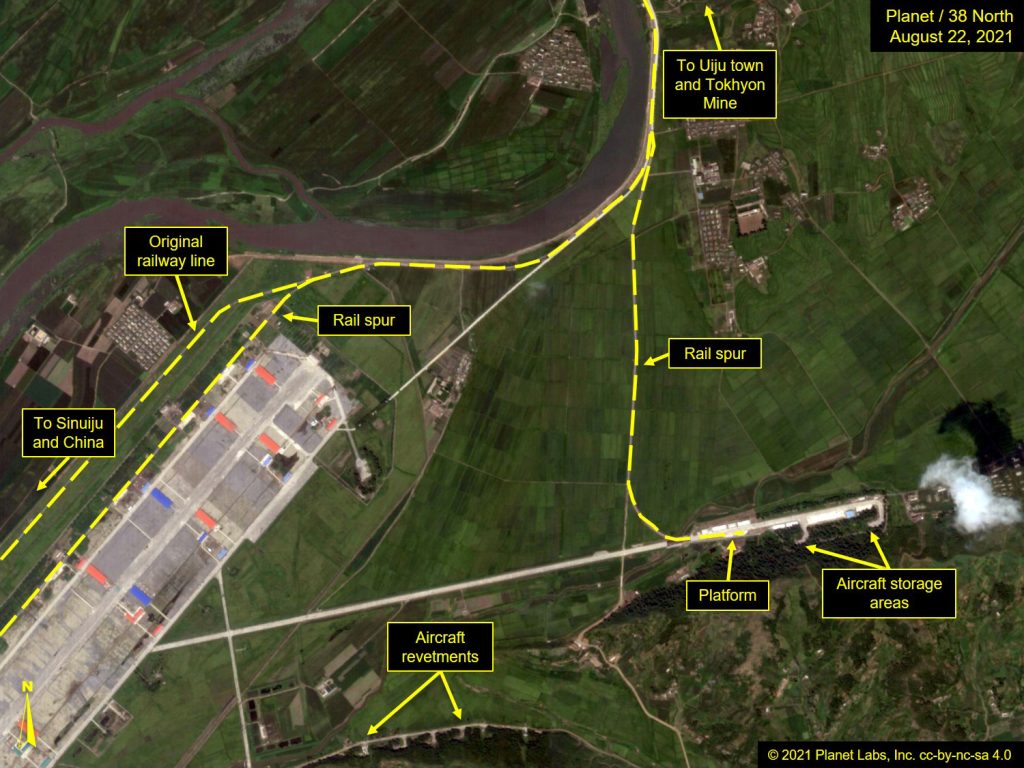
Activity in this area has picked up since August 16, when numerous trucks and utility vehicles were observed moving about the area. Two semi-trailers and a cargo van were backed to the rail spur, and by August 22, a row of unidentified material had been arranged at each of the storage areas.
On October 10, significantly more materials had been delivered to the storage areas. Several flatbed railcars with cargo were parked adjacent to the loading platform, and additional materials had been offloaded onto the platform. By November 11, the railcars had departed, and most of the materials observed earlier on the four large storage platforms had been removed.
Figure 5. Close up of second rail spur’s platform.
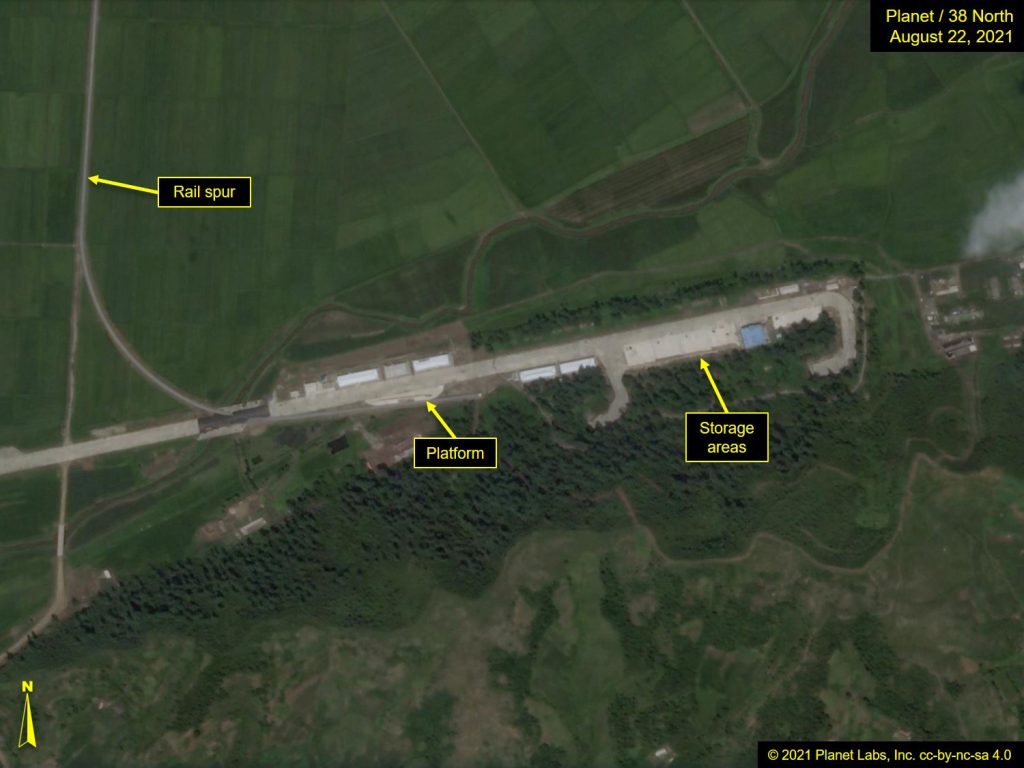
Since at least August 13, aircraft and an assortment of trucks, vans and unidentified materials have been placed in the revetments along the central east-west road, the purpose of which is unclear. In the first revetment at the west end of the road, 12 MiG-21s are parked. Eight MiG-21s are in the second revetment, and an IL-28 is in the seventh revetment. The trucks and vans are in the remaining revetments. The arrangement of the aircraft within the revetments is not orderly, suggesting the aircraft might be derelicts and could not be flown out before the airfield conversion began. Alternatively, their continued presence may indicate that the airfield will be returned to its original purpose at some point in the future.
Figure 6. Close up of aircraft stationed near second rail spur.
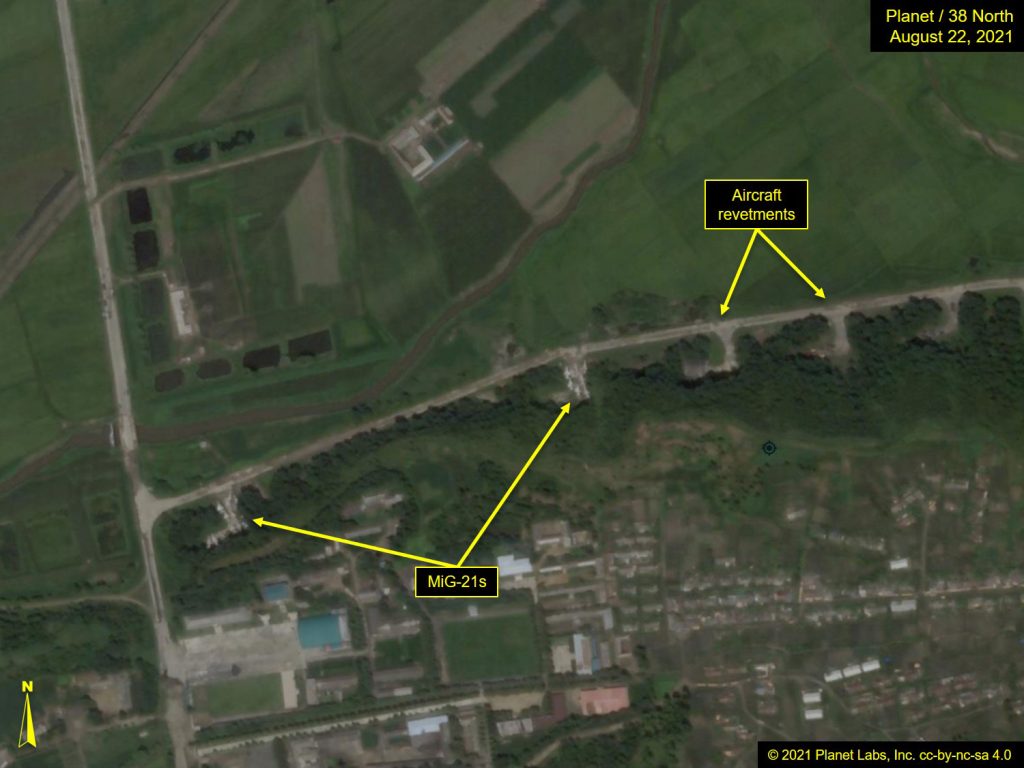
The new rail spur leads off the same line that comes across the border from China and into the loading platforms at the airfield, but unlike the other spur, this one doesn’t allow trains from China to run directly into the airfield.
The rail network connection favors trains heading in the opposite direction. Those coming from China or Sinuiju have to stop and back up into the spur. But there is little in the opposite direction. Beyond the airfield, the railway line continues 25 km past Uiju Town to the September Iron General Enterprise ironworks and terminates at Tokhyon Mine.
In Sinuiju City
Despite the activity at the possible disinfection facility, the customs yards for trucks on the Chinese and North Korean sides of the Yalu River were quiet in imagery from November 16. Pre-COVID, goods flowed into North Korea by both truck and train, although it is unclear if this will be the case when trade resumes.
North Korean authorities might prefer to rely on trains only because they can be sent directly to the Uiju Airport facility while keeping much greater separation from North Korean citizens in downtown Sinuiju.
Last month, South Korea’s KBS broadcast footage of a train heading into China from North Korea. The trip was reportedly part of preparations to reopen the railway line between the two countries.
Figure 7. Overview of Chinese customs yard in Dandong.
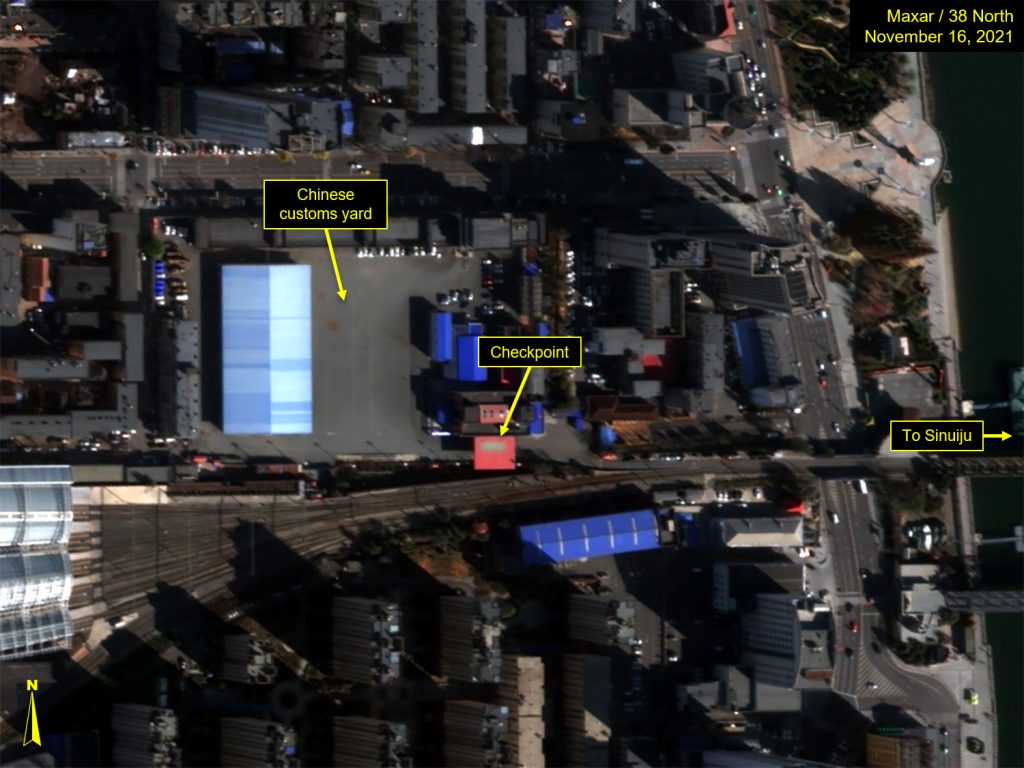
Figure 8. Overview of North Korean customs yard in Sinuiju.
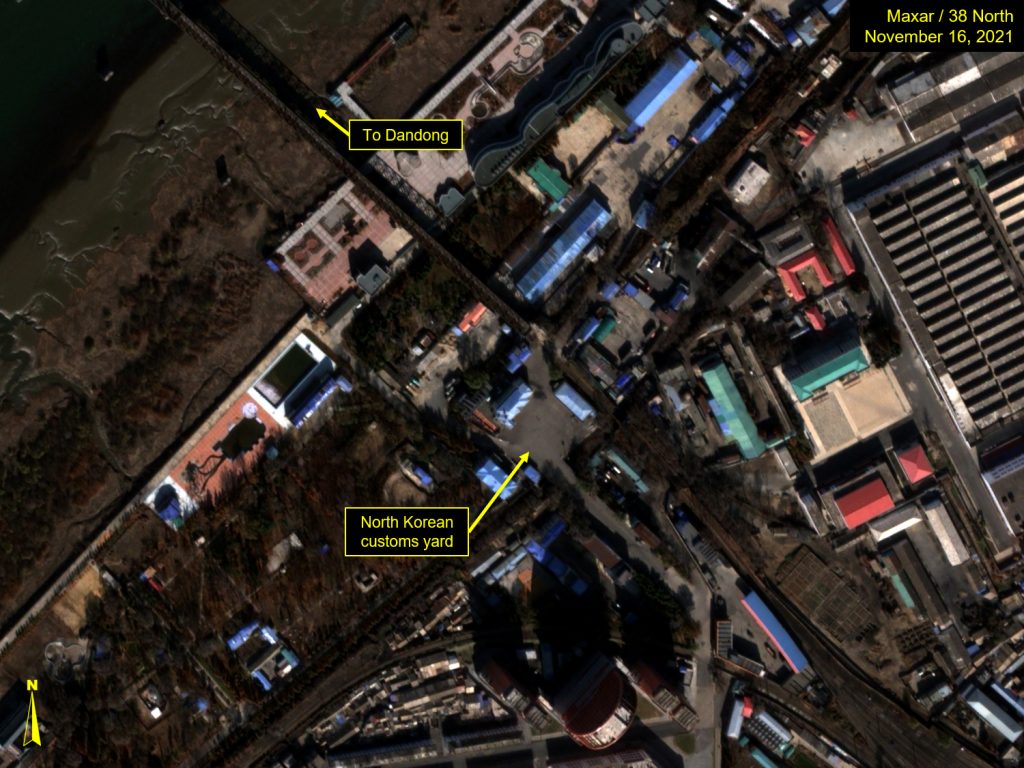
Also in Sinuiju, a riverfront development project has made progress throughout the summer. External construction of three circular apartment buildings appears to have been largely concluded, and foundations have appeared for two additional buildings.
The new buildings sit directly opposite Dandong and should make North Korea appear slightly more developed when viewed from the Chinese side.
Figure 9. New apartments and foundations visible in Sinuiju.
